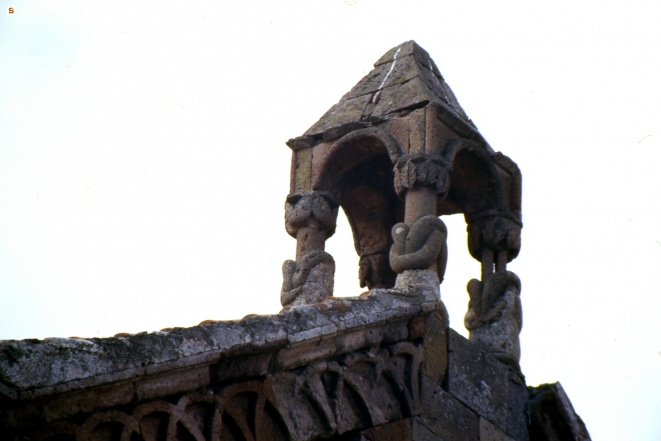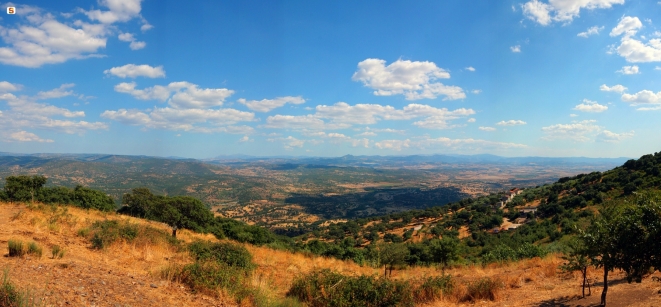The sunken bell
The miracle of the tolling of the stolen bell
Many and many years ago, in Ghilarza, in the Barigadu region, the heart of Sardinia, where the mountains meet the plains and the cold north winds meet the sirocco of Campidano plain, a white church was built, and it was dedicated to Saint Antine, wich was said to have brought so much luck to the people of the village.
The tolling of its bronze bell, calling the faithful to prayer, flew over the forests of oaks and cork trees reaching the opposite bank of the river Tirso. Here is Ulà and at that time people from Ulà and Ghilarza were not going very well.
"It's better to have a dead at home than a Ghilarza Man at the door" said ones, and the others replied "If, when you are about to shoot a fox, see somebody from Ulà, let escape the fox!" Local pride grudges, of which, now, fortunately, no trace remains anymore.

It was on one evening in March that a group of young Ulà boys heard the Angelus tolls from the bell, that brazenly, glimmered beyond the river Tirso. The guys watched and listened, eaten up from envy, flooded by the light of sunset.
The boldest leaped, in his embroidered waistcoat, glowing in the golden light, in the middle of the group: "We would have the bell if only we went to take it."
It was then that sa Mama 'e su 'Entu (the Mother of the Wind) began shaking the dew drops that had dampened her headscarf. Her empty stomach grumbled, but at the boys seemed a distant thunder.
They were immediately all agreed for the next day: whom would provide the boat, whom the ropes, another would bring the blankets, another one would make sure that a chariot would have been beyond the river, they would not be missed even a lamp, spirit for warming themselves, an amulet against bad luck...
At the appointed hour they sprang out of bed and walked fast, bent under the blacks cloaks of coarse wool, protected by the darkness and the drizzle that was fallen whole day.
They took off the moorings and, from the deserted quay, the boat slid, skidding toward the center of the river.

The Mama 'e su 'Entu had woken with them that night. And while, stealthy, they organized the preparations, she was watching them, waiting for the right time. They rowed upstream, unaware, animated by the boldness of youth, to the lights of Tadasuni.
Darting like martens they reached the church. The bell was there, blinking in the light of distant lightning. Under the eyes of Saint Antine, that nothing could do for them, they accomplished the blasphemous act.
Blinded by greed they did not see the Saint raising his arms to the sky in order to prevent what was about to happen.
Invisible fingers helped them to lift the bell and carry it, nimbly, on the boat. Hidden from the folk traditions that had decreased her to a bogey for children, the goddess arose then in all her glory, mustering her children, the winds, to banqueting together with her.
When the flood came, the sky and the earth roared and crashed into thunderbolt, lightning flaring showing the trees that seemed hooked hands ready to seize them. The wave took a huge rush before jumping, running along the Tirso, then snapped beneath them, lifting them up in the air. The boat fell back, remaining miraculously afloat. Clung to the oars, at each flash of lightning they glanced at the shore to see what distance separated them from salvation; while the highest of them giving orders to the small crew so that the boat could remain in balance. But all their efforts seemed useless. The goddess was close to satiate her filthy hunger.
Another monstrous wave hit, very high, the side of the drunk boat, leaving it naked like a sieve. So it was that, among the roar of the water and the cries, the boat was filled with water carrying the bell and the youths.
From that year the miracle repeats: at noon you can hear the tolling of the bell coming from the bottom of the river, while the statue in the church of Saint Antine rise up three times the arms to the sky, as if it wanted to stop the Mama 'e su 'Entu.